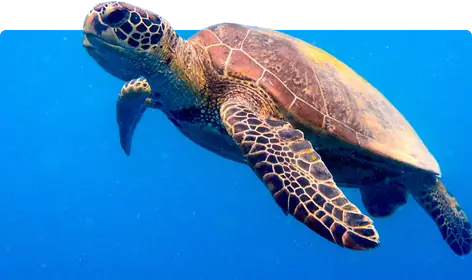Navigating the Oceans: The Incredible Migration Patterns of Sea Turtles
Introduction
Sea turtles, some of the oldest creatures on Earth, have fascinated scientists and nature enthusiasts alike for centuries. These majestic reptiles are known for their extensive migratory patterns that take them across vast oceans, traversing thousands of miles from their nesting grounds to feeding locations. Understanding their migration is crucial for conservation efforts, ecosystem health, and the overall balance of marine life. In this article, we will explore the remarkable navigation skills of sea turtles, the challenges they face during migration, and the conservation efforts aimed at protecting these ancient mariners.
The Life Cycle of Sea Turtles
Before diving into the intricate details of their migration patterns, it is essential to understand the life cycle of sea turtles. Sea turtles are reptiles belonging to the family Chelonii, and they undergo several stages:
1. Nesting
Female sea turtles return to the beaches where they were born after several years in the ocean. They typically nest every two to four years. After laying approximately 100 to 200 eggs in a sandy nest, they cover it up and return to the sea, leaving the eggs to incubate for 45 to 70 days, depending on the species and environmental conditions.
2. Hatching
Once the eggs hatch, the baby sea turtles, known as hatchlings, make a perilous journey to the ocean. They must navigate various threats, including predators like birds, crabs, and even human interference. It is a race against time, as only a small percentage of hatchlings survive to adulthood.
3. Juvenile Stage
After entering the ocean, turtles spend several years in a "lost years" phase, where they are less visible and less studied. They often inhabit coastal waters, feeding on algae and small marine invertebrates. This phase is crucial for their growth and development.
4. Adult Stage
As they mature, sea turtles migrate to feeding grounds, where food sources are abundant. Adult sea turtles can travel thousands of miles between feeding and nesting sites, significantly contributing to the ecosystem’s health as they graze on seagrass and maintain vital underwater habitats.
The Migration of Sea Turtles
Long-Distance Travelers
The open ocean is a challenging environment, and sea turtles are adept navigators. Some species, like the leatherback turtle, can migrate more than 10,000 miles annually between nesting and feeding sites. Their long-distance migrations are among the most impressive in the animal kingdom, often crossing entire ocean basins.
1. Common Migration Routes
Different species of sea turtles have distinctive migratory routes:
- Loggerhead Turtles: These turtles often travel from nesting sites in the Mediterranean and the U.S. East Coast to feeding areas in the Atlantic.
- Green Turtles: Typically found in warmer waters, they migrate between nesting sites in the Caribbean and feeding areas along the coasts of Central and South America.
- Leatherback Turtles: Known for their extensive migrations across the Pacific and Atlantic Oceans, they can travel between North America and the coasts of Africa and Europe.
Navigational Skills
How do sea turtles navigate such vast ocean distances? Researchers believe they employ multiple navigational strategies, including:
1. The Earth’s Magnetic Field
Sea turtles have specialized receptors that allow them to perceive the Earth’s magnetic field and use it as a compass. This magnetic orientation helps them determine their geographical position and direction during long migrations.
2. Visual Cues
Though ocean waters can often appear uniform, sea turtles are adept at recognizing various visual landmarks, such as coastlines and oceanic features. This skill is most crucial in shallow waters, where they can observe the seabed.
3. Olfactory Cues
Sea turtles have an exceptional sense of smell, which allows them to detect chemical cues in the water. This ability may help them locate feeding areas and suitable nesting grounds.
The Role of Ocean Currents
Ocean currents significantly impact the migratory routes of sea turtles. These natural highways can either assist or hinder their movements, affecting their energy expenditure during migration. Understanding currents’ role is important for predicting migration patterns and addressing conservation concerns.
Challenges Faced by Sea Turtles During Migration
While sea turtles are resilient and remarkable navigators, they face significant threats during their migrations. These challenges can impact their populations and survival rates.
1. Marine Pollution
Plastic pollution poses a severe threat to sea turtles, who may mistake plastic debris for food. Ingesting plastics can lead to serious health issues, including internal injuries, malnutrition, and death. Additionally, chemicals in polluted waters may disrupt their reproductive systems and overall health.
2. Climate Change
Climate change affects sea turtle nesting and feeding areas. Rising temperatures can alter sand temperatures, leading to skewed sex ratios in hatchlings. Climate change also contributes to sea-level rise, affecting nesting beaches and increasing erosion. Warmer sea temperatures can impact the distribution of jellyfish and other prey, affecting juvenile and adult sea turtles.
3. Fishing Bycatch
Accidental capture in fishing gear is a significant threat to sea turtles. They can become entangled in nets or hooked on fishing lines, leading to injury or death. Bycatch is one of the leading causes of sea turtle mortality and poses challenges for their conservation.
4. Habitat Destruction
Coastal development, invasive species, and pollution can lead to the destruction of essential habitats, such as nesting beaches and feeding grounds. Protecting these critical areas is vital for the survival of sea turtle populations.
5. Illegal Trade
Some cultures continue to poach sea turtles for their meat, shells, and eggs, posing a direct threat to their populations. This illegal trade disrupts local ecosystems and hinders conservation efforts.
Conservation Efforts
Recognizing the challenges faced by sea turtles, numerous organizations and governments have taken steps to protect these ancient mariners. Successful conservation efforts focus on several key areas:
1. Legal Protections
Many countries have implemented laws and regulations to protect sea turtles at both national and international levels. Treaties such as the Convention on International Trade in Endangered Species of Wild Fauna and Flora (CITES) aim to regulate trade and protect threatened species.
2. Nesting and Feeding Area Conservation
Implementing conservation programs that protect nesting beaches and feeding grounds is essential. These programs often include habitat restoration, reducing human disturbances during nesting seasons, and designating marine protected areas.
3. Reducing Bycatch
Efforts to reduce bycatch include promoting the use of turtle-friendly fishing gear, implementing bycatch reduction devices, and educating fishermen about sea turtle conservation. Organizations work with fishing communities to develop sustainable fishing practices that prioritize environmental health.
4. Public Awareness and Education
Raising awareness about the importance of sea turtles is crucial for their conservation. Community-based education initiatives, outreach programs, and eco-tourism can foster a greater understanding of marine ecosystems and the role of sea turtles within them.
5. Research and Monitoring
Ongoing research is essential for understanding sea turtle populations, migration patterns, and the impacts of climate change and human activities. Monitoring programs help track sea turtle movements, collect data on population trends, and identify areas requiring targeted conservation efforts.
Conclusion
The incredible migration patterns of sea turtles serve as a testament to their resilience and adaptability in the face of environmental challenges. These ancient mariners have survived for millions of years, navigating the vast oceans and playing a critical role in marine ecosystems. However, their survival is increasingly threatened by pollution, climate change, habitat destruction, and illegal trade.
Conservation efforts focusing on habitat protection, legal regulations, and public awareness are essential for ensuring their continued existence. By understanding the remarkable journey of sea turtles and advocating for their protection, we can contribute to the health of our oceans and the preservation of these iconic species for generations to come.
Footnotes
- National Oceanic and Atmospheric Administration (NOAA). “Sea Turtles.” Last modified 2020. www.noaa.gov.
- International Union for Conservation of Nature (IUCN). “Sea Turtles.” Last modified 2021. www.iucnredlist.org.
- Sea Turtle Conservancy. “Migration.” Accessed October 2023. www.conserveturtles.org.
- Kamel, S. J., & Mrosovsky, N. (2004). “Behavior of Female Turtles During Nesting.” Journal of Herpetology, 38(3), 373-383.
- Spotila, J. R. (2004). Sea Turtles: A Complete Guide to Their Biology, Behavior, and Conservation. Johns Hopkins University Press.
- Hamann, M., et al. (2010). “Global Research Priorities for Sea Turtles: An Update.” Endangered Species Research, 10, 1-9.
- Turtle Island Restoration Network. “Bycatch Reduction.” Accessed October 2023. www.seaturtles.org.
This article endeavors to cover the outline of the topic within the limits provided, focusing on the multifaceted aspects of sea turtle migration while embedding fundamental research and conservation themes.


























Add Comment